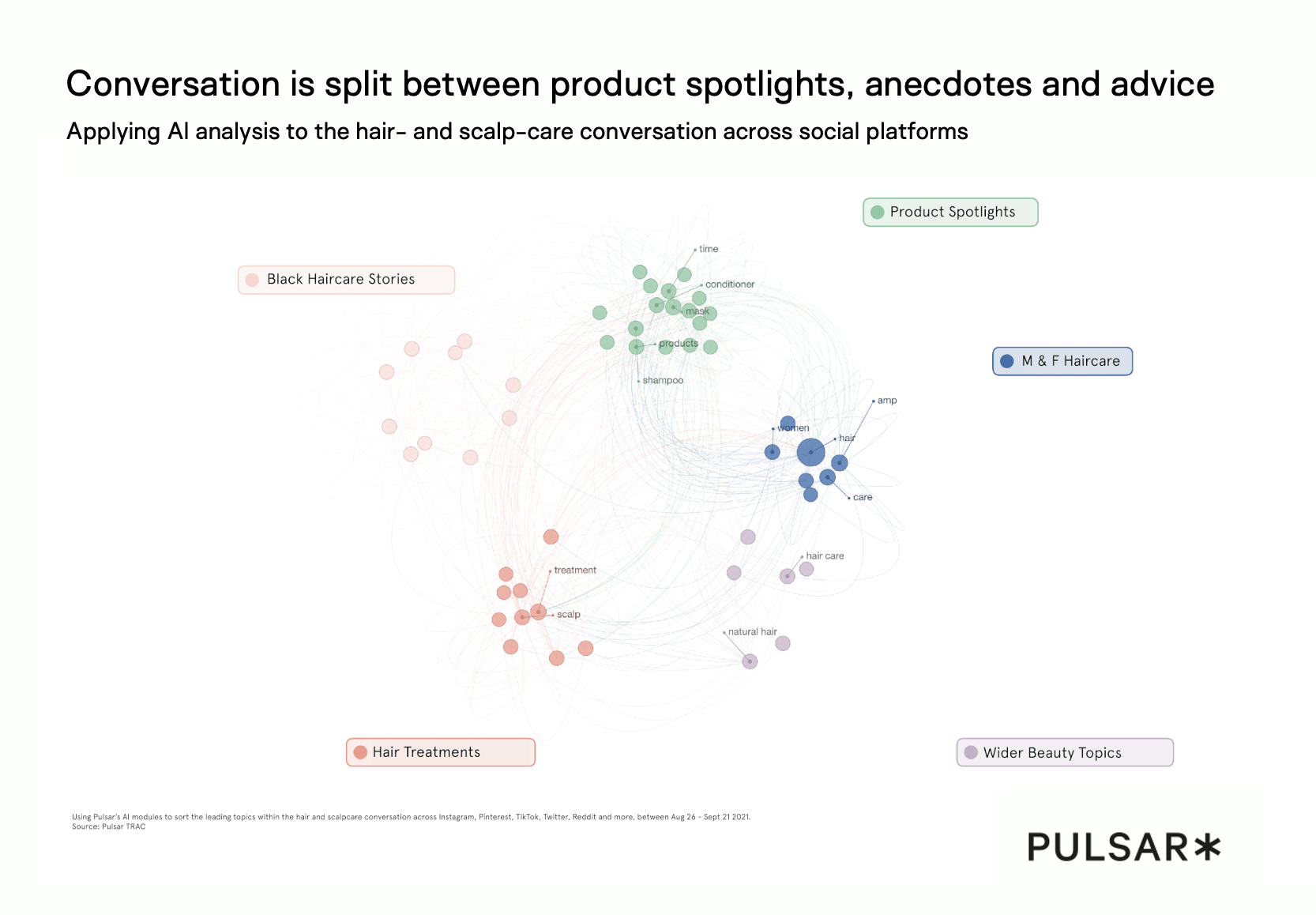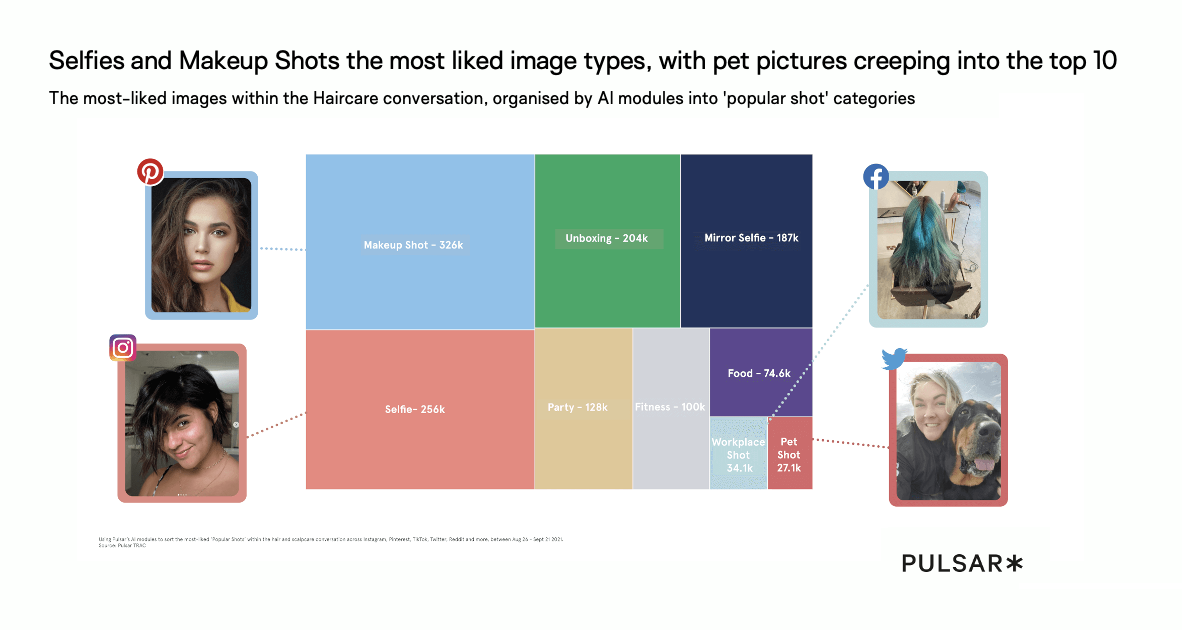
How Haircare came to resemble Skincare: Audience Behavior in the Self-Care Space
- Beauty
Haircare is beginning to resemble skincare. The routines and buying behaviors we're accustomed to seeing around skincare, which promote regular care and nourishment, have made their way upwards to the crowns, scalps and tresses of beauty buffs.
In one sense, this is unsurprising. Everyone at some point discovers that hair is simply a collection of skin cells. What took us so long?
Looking at the social and search data around the topic, however, emphasizes the importance of worldwide lockdowns and social-distancing in accelerating this trend. Taking Hair Masks as a proxy for the trend at large, we see that search and social interest skyrocketed and sustained as economies and societies spent less time outside.
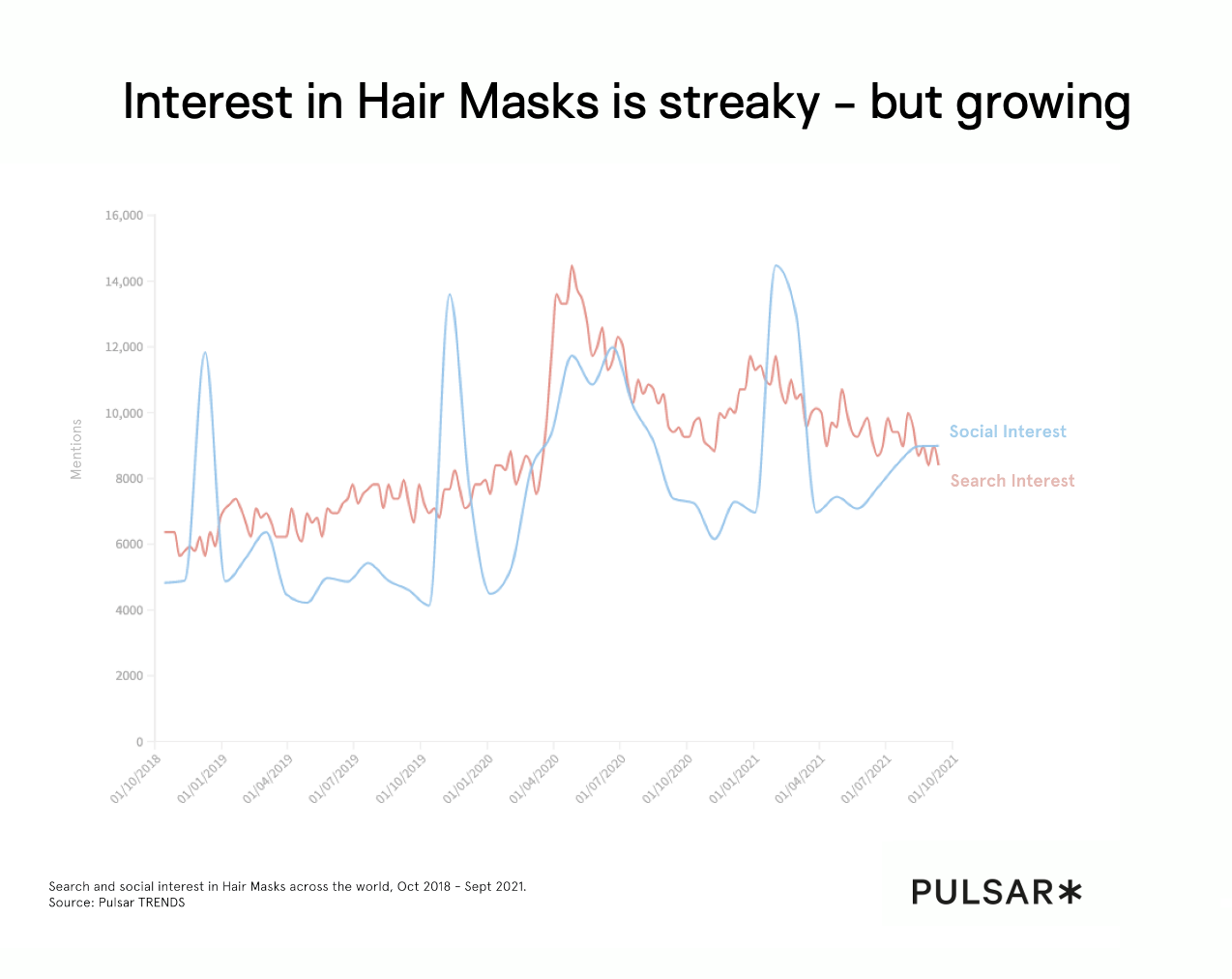
For a window of time, self-care trumped statement looks. As societies reopen, makeup trends have once again moved to the centre of the beauty discourse, but interest in hair masks remains elevated beyond its pre-pandemic levels.
So we decided to take a closer look at this particular conversation, to better understand what was driving this increased buzz around self-care in the haircare space.
Applying Social listening to haircare topics
Alongside social strategist Kim Townend, we set up a search using Pulsar TRAC that would allow us to bring in all mentions of hair and scalp care over a month-long period between August and September. In doing so, we looked at posts made across Instagram, Reddit, TikTok, Pinterest, Twitter, Facebook and more, a collection of data we interrogated using both in-platform AI modules and linguistic analysis.
First of all, we wanted to get a sense of the conversation as a whole. That meant using AI to visually represent the relationship between the main topics of conversation, and how regularly they're used in conjunction with another.
The discussion centres around particular product types, which are folded into advice, anecdote and advertising, the last of which emanates from both brands and, more significantly, individual salons.
Clearly, this is a varied conversation taking place on several levels, as individuals post on social platforms to affirm themselves, gather information and inform their decisions.
But what can this data tell us about why people use products?
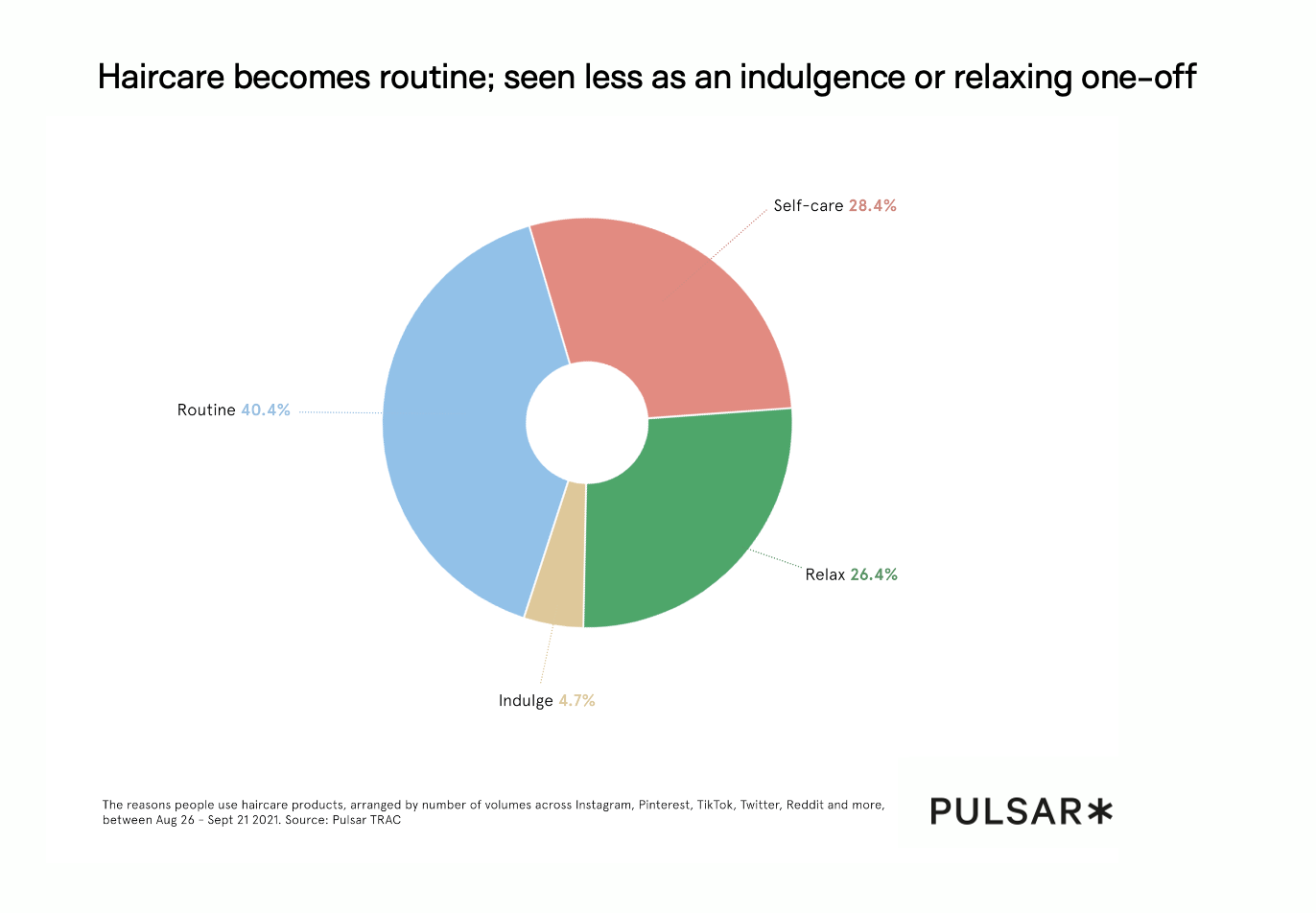
Hair masks and treatments are evidently not viewed as indulgences or one-off treats in the way they once were. Instead, they've become integrated into regular self-care routines.
https://www.pinterest.co.uk/pin/739505201319563313/
Which is not to say they're no longer an integral part of one-off pamper sessions...
https://twitter.com/LeahJayK/status/1439572467224244231
...but rather that the number of people who identify hair masks and treatments with routines has seen significant growth.
What's leading conversation among hair- and scalp-care consumers?
Exploring this dataset allows us to address several key points, such as which brands and values have come to dominate the discourse.
But first, it's worth casting an eye on what types of haircare are most explicitly spoken about.
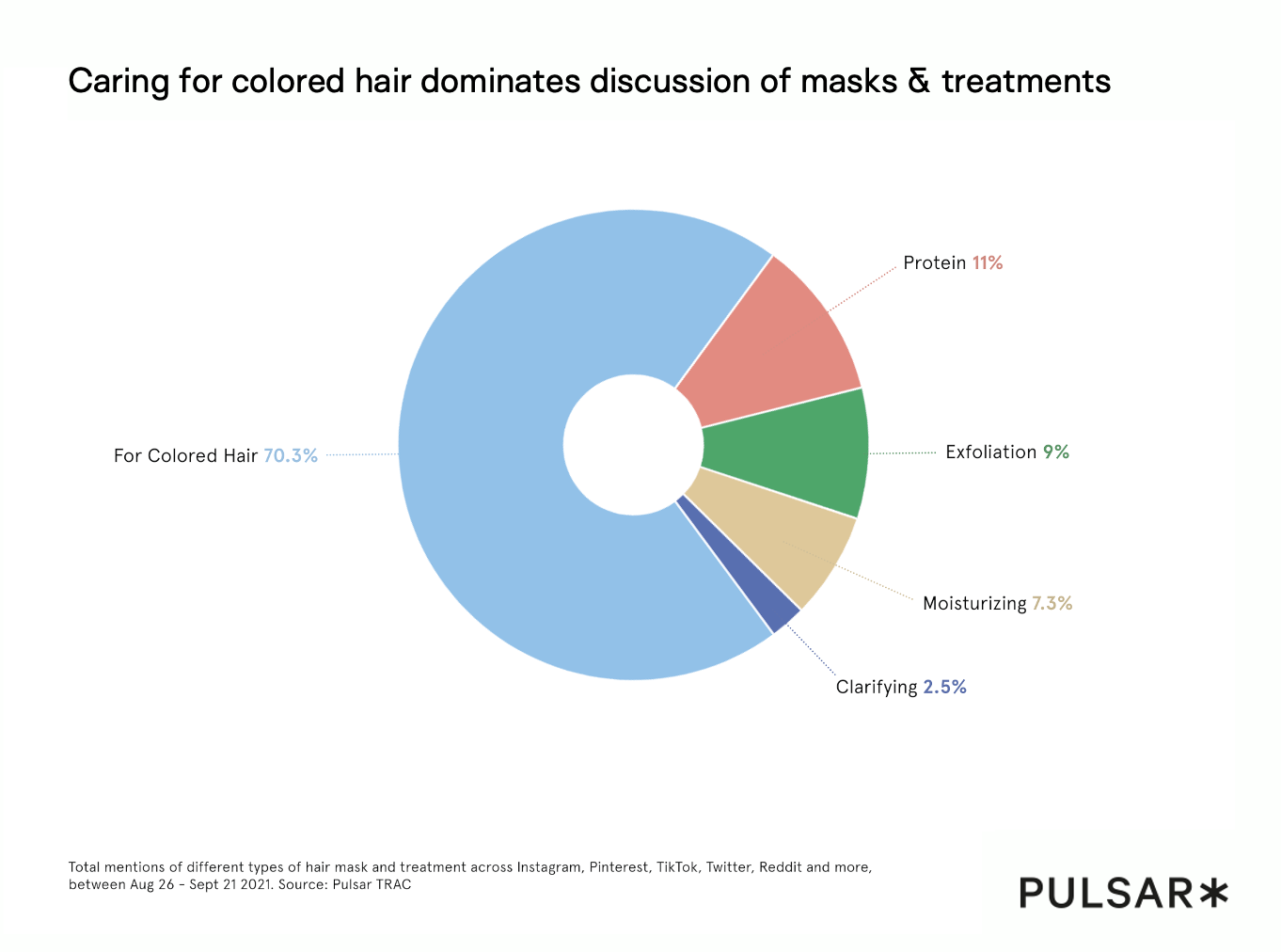
Colored hair requires extra care and attention, and the surge in at-home dye jobs that took place over 2020 has likely led newbies and salon veterans alike to take to online spaces to share tips and ask for advice.
Often, these categories are also used in conjunction with one another, as individuals tailor their routines to factor in both personal aesthetic and their hair's own nature.
https://twitter.com/skinnythorn/status/1439997991318810635
Given its suitability for use on colored hair, it's no shock, then, to see that Olaplex leads mentions of individual brands, and by quite some margin.
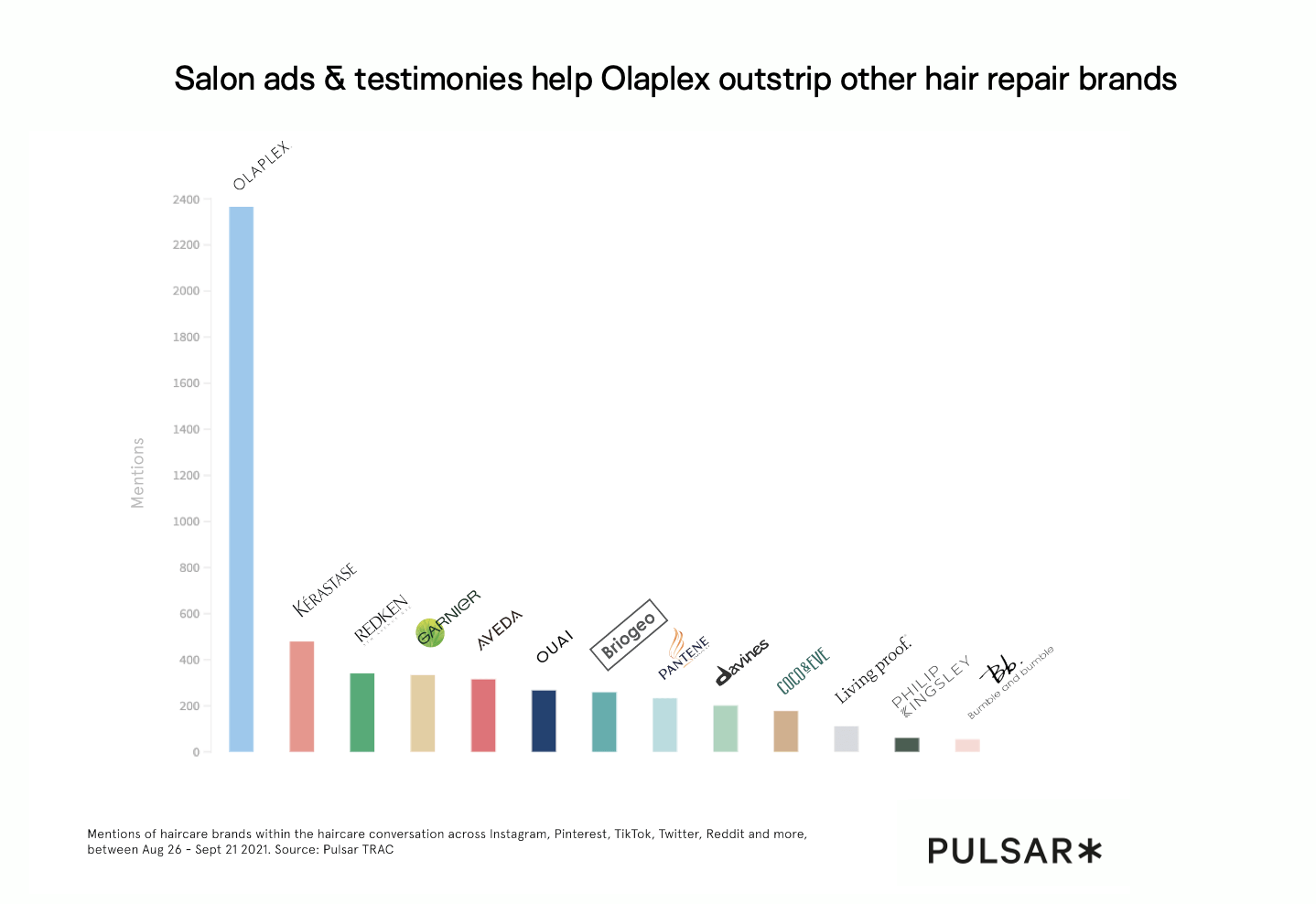
One indicator of Olaplex's hegemony is how the brand has been absorbed into popular culture, and jokes which presume some understanding of its products:
https://twitter.com/carlzzzzz5/status/1439396608517492738
But what causes someone to choose a particular brand? Increasingly, ethical factors play at least as important a role as testimony and own experience.
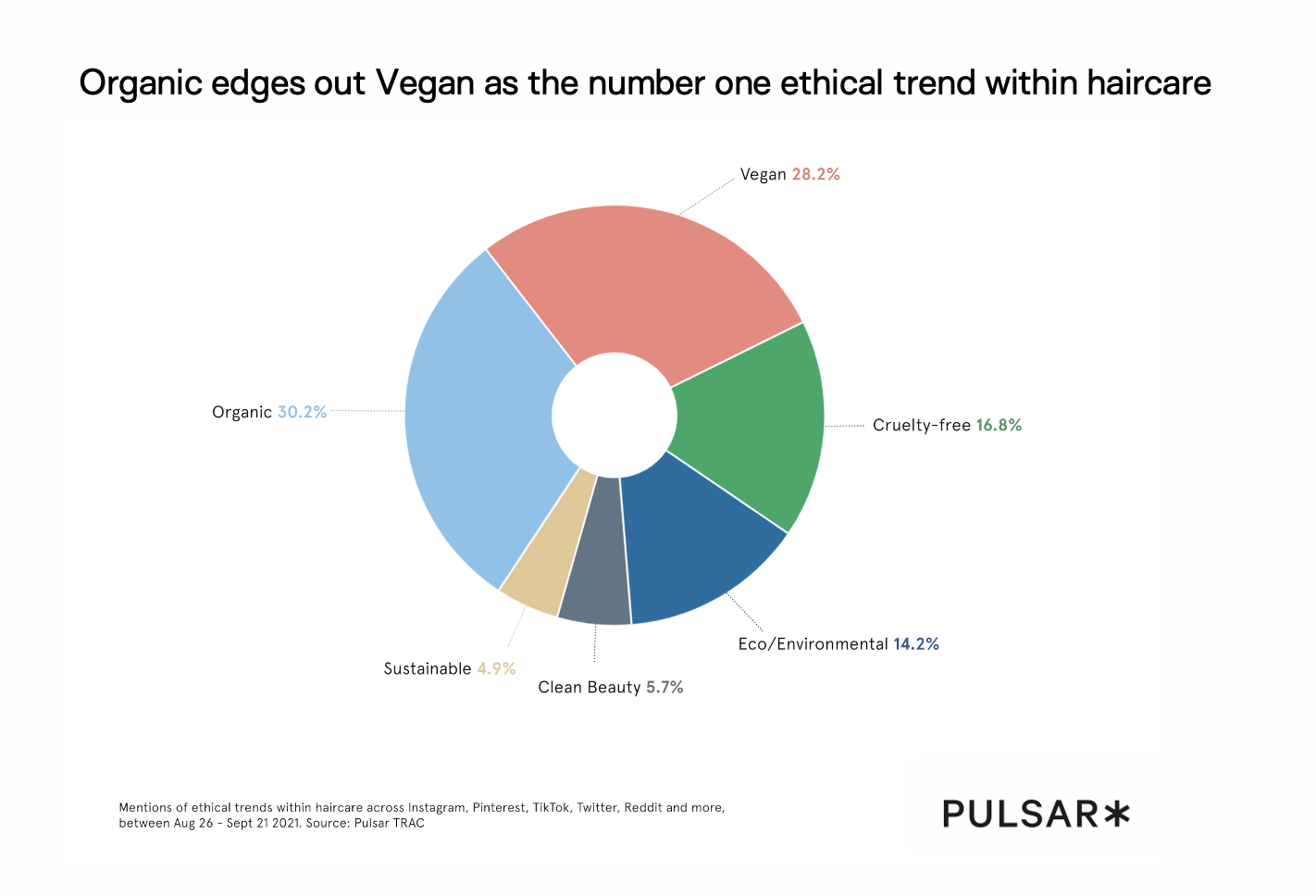
A product can tick all the boxes but, if it doesn't meet with the values of the prospective purchaser, ethical considerations will often trump aesthetic ones.
https://twitter.com/classofseokjin/status/1439587989320085504
This focus on the organic and natural has led to the foregrounding of more natural ingredients, with oils and butters among some of the most discussed.
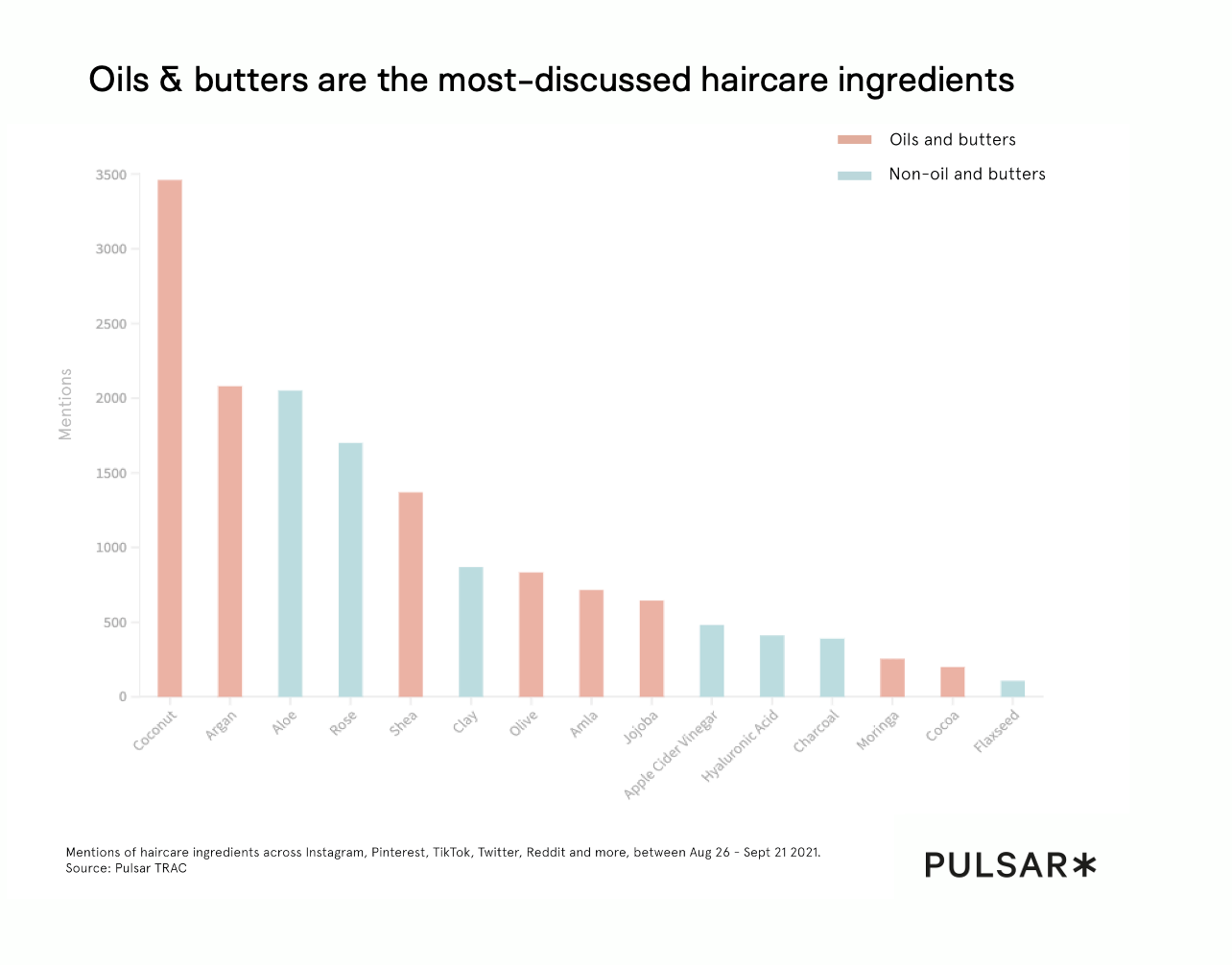
Particular focus falls on oils that pack a punch both within formulas, and also as treatments in their own right:
https://twitter.com/buttaPecanns/status/1437130980477874177
How do attitudes towards hair- and scalp-care spread?
Having established the topics that dominate discussion, applying audience intelligence to the world of hair- and scalp-care enables us to see who it is having this discussion.
On the one hand, audience data suggests a female-led discourse. And yet, the female contingent is only around double that of the men's.
Men are increasingly buying these products for themselves, as numerous buyer guides on the topic indicate. But this higher-than-expected quantity of engaged men is more likely to suggest a rapidly growing awareness as to the ins and outs of this particular type of self care, something furthered by the openness of figures like Jack Grealish.
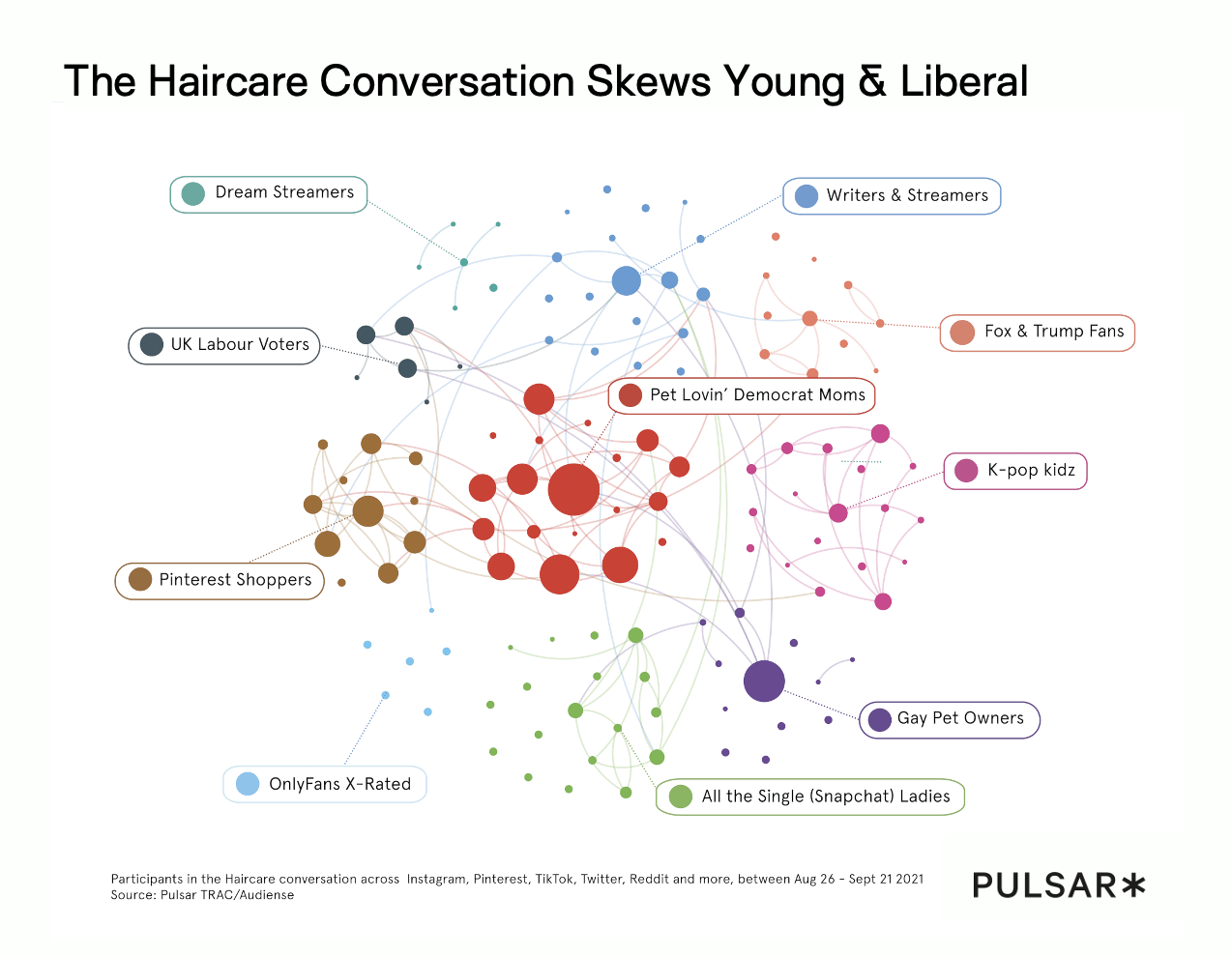
That said, the conversation at large does skew female. And not only that, it's also distinctly liberal, with Fox & Trump Fans a notable exception; Kamala Harris is one of the most shared common affinities across the different participants, as are the topics of pets and animals.
We can feed these segments back into the live conversation, to see how attitudes differ between different communities. All the Single Snapchat Ladies, so named for their media habits and relationship status, are particularly likely to refer to their masks and treatment as self-care, while K Pop Kids almost entirely refer to the products as being part of a 'routine'.
And lastly, if we want to how information travels, one approach is to identify the most engaged-with image types within what is a predominately visual conversation.
As with many beauty topics, its pictures of the face, both user-generated and from professional accounts, that account for the greatest number of 'likes'.
The proliferance of workplace shots, however, underlines the importance salons have in dictating the course of the conversation, even for those opting to carry out treatments at home.
Likewise, we see no shortage of Pet Shots. We've already established that this audience over-indexes for conversation around pets, whether that's using cute animals as proxies for reactions, or else capturing their nourished hair and four-legged friend in the same wholesome shot.
